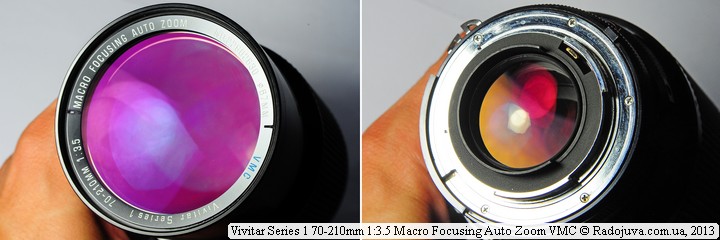
- #Vivitar 70 210 series 1 serial numbers
- #Vivitar 70 210 series 1 serial number
- #Vivitar 70 210 series 1 serial
- #Vivitar 70 210 series 1 professional
As you know, Vivitar was primarily a marketing and distribution company, so if only for the sake of inventory management and quality assurance it would need to know which manufacturers were supplying which lenses, cameras, flashes, etc.
#Vivitar 70 210 series 1 serial
"I don't know for a fact but I can't imagine them not having manufacturer codes in the product serial numbers. Gordon Lewis, who worked at Vivitar in the 1970s and 1980s, was a Vivitar Product Specialist, handled consumer relations for Olympus OM products, and authored many Vivitar instruction manuals, lends some credence to the use of a serial numbering system: They were only referred to by name remember this all pre-dates the bar-code SKU systems in use today."
#Vivitar 70 210 series 1 serial numbers
In any case, we never used lens serial numbers as any marketing or inventory identifiers. That wasn't my department someone in P&B procurement might have known. "I don't know that P&B had direct input into designating the serial numbers. He has examined this list and made these comments: He was involved in new product development, marketing, sales, and dealer communication. This list has been reviewed by two Ponder and Best employees and has been checked against a wide range of historical information but there are likely still errors and omissions.īill Swinyard was the Product Manager from 1969 through 1971 at Ponder and Best. But, within certain years, this list may be helpful as one tool among many to help determine who made a given lens.

#Vivitar 70 210 series 1 serial number
No direct evidence to date confirms that Vivitar used the serial number system presented above. I also remember having given away prototype models of a Vivitar 100mm f/2.8, an 85mm f/1.8, and an 800mm f/8." (photos of Bill Swinyard's prototype can be seen in the article: Vivitar Auto Wide-Angle 20mm f/3.8)įrequently Asked Questions How likely is it this list or other alleged Vivitar serial number lists are valid? The 0003 indicates only that it is a very early model, although there were a dozen or so of such prototypes made. Mine is a Vivitar 20mm f/4 with a black alloy mount, while the production version was labelled as an f/3.8 and had a stainless mount. "I still have one of the prototypes that later went into production. Bill Swinyard describes an example of a prototype lens he owns: In other cases the lenses were produced and sold but with slight mechanical or visual differences in the higher numbered production versions.
#Vivitar 70 210 series 1 professional
In many cases prototype lenses never made it to production for example the Vivitar Professional 180mm f/2.8. Prototypes lenses generally used the same serial number scheme as production lenses but will have very low numbers in the portion of the number that reflects the manufacturing sequence.

The sources used in assembling this list are cited as used but not all should be considered authoritative. Many variants of this list can be found online, sometimes with unsubstantiated claims the list was provided by Vivitar insiders. The information presented here is the result of individual research by lens collectors. Vivitar never published any public documentation of their serial numbering system. It is actively changing in response to ongoing research. This list should not be considered definitive.


 0 kommentar(er)
0 kommentar(er)
